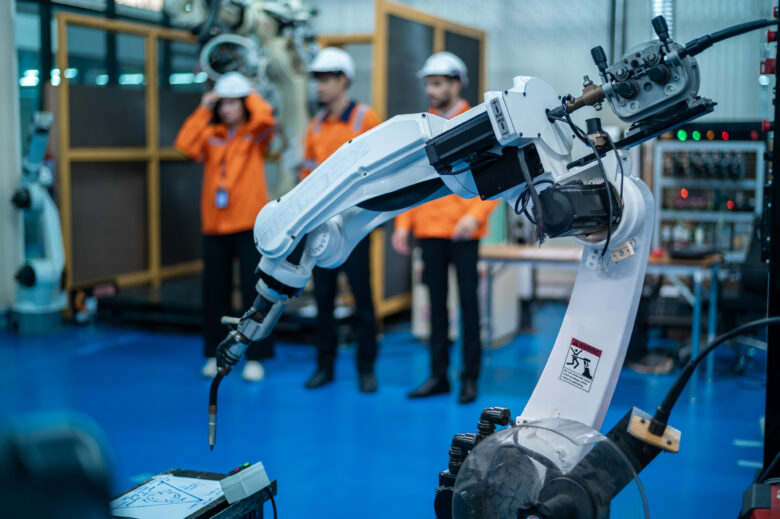Smart factories are the future. Just as smart homes are, smart navigation…smart everything.
If we had to pick a niche that would benefit the most from the integration of smart technology, factories and warehouses would be at the top. According to FourJaw Manufacturing Analytics, 78% of manufacturers allocate more than 20% of their improvement budgets to smart manufacturing initiatives.
An industry once plagued with slow production lines, human error, and troubled supply chains needed smart technology solutions. And in our opinion, Autonomous Mobile Robots (AMRs) are the future of smart factories. Let’s explore why below.
What Are Autonomous Mobile Robots (AMRs)?
AMRs use cutting-edge technology. They’re a combination of sensors, cameras, AI algorithms, and Light Detection and Ranging (LiDAR) to make split-second navigation decisions. And, yes, there’s the worry of failure points.
The most sophisticated models are programmed using closed-loop communication for high-speed and reliable interactions. Even in the most harsh and unpredictable environments, ultra-reliable wireless controls create deterministic communication for near-perfect precision (there’s always a minuscule failure rate).
We will argue that this technology is still ‘up-and-coming.’ It’s not something you see in every factory. But the goal of this evolving technology is to automate and facilitate the movement of goods and materials within a factory. These robots map out the layout of the factory, understanding the unique requirements of each workflow and adapting when those change.
They’re the future of smart factories.
The Step-Up From Automated Guided Vehicles
AMRs are the future, but Automated Guided Vehicles (AGVs) are where it all started. The technology is similar, but when compared to the new generation, it’s so outdated. Yes, they move things, but not in the same way.
For an AGV to move an object, you must tell it exactly how to do it. They’re programmed to follow predefined paths that you have to reprogram if the slightest thing changes on that path. And, more often than not, they navigate using magnetic strips or floor-mounted wires. Changing their path is an ordeal.
Compared to the new generation, they’re unreliable, slow, and somewhat annoying. With automated robots, you don’t need wires or tracks. They automate thinking, not movement. And when they use IO-Link Wireless for industrial predictive maintenance, it takes it that step further. These machines use the same real-time data to determine the optimal time for maintenance activities.
The Future of Smart Factories Starts With AMRs
Factories couldn’t escape the digital transformation. And any factory that knows what’s good for them will start investing in automated robots. In our opinion, it’s peak workflow optimization. They reduce downtime, increase safety, and give human workers the freedom to focus on skilled tasks.
And they’re 100% scalable. No matter the size of the factory or how bespoke the production line, they fit in. You don’t need a massive overhaul of your infrastructure. You can introduce one or two and expand as needed.
You can also enjoy less time micromanaging systems and more time refining output. Automated robots keep the flow of materials smooth, reduce idle time between tasks, and handle schedule shifts and/or supply chain stalls effortlessly.
From Chaos to Coordination
Factories are chaotic by nature. Moving parts, clashing schedules, and constant changes make coordination chaotic. Naturally, humans struggle with that. Any warehouse line manager will admit that.
Automated robots turn chaos into coordination. They understand who’s doing what, where things need to be, and when to complete tasks. They work across multiple departments, syncing with inventory systems, production timelines, and delivery schedules. It’s total harmony. Everything becomes connected. Everything becomes seamless.
Conclusion
The investment is 100% worth it. They’re guaranteed to save time and money.
Autonomous mobile robots aren’t just robots on wheels. They’re the future of what smart factories will become. Agile. Autonomous. Always adapting. And, yes, the technology still has room to grow, but the direction is clear. They are the future of factory automation.














Leave a Reply